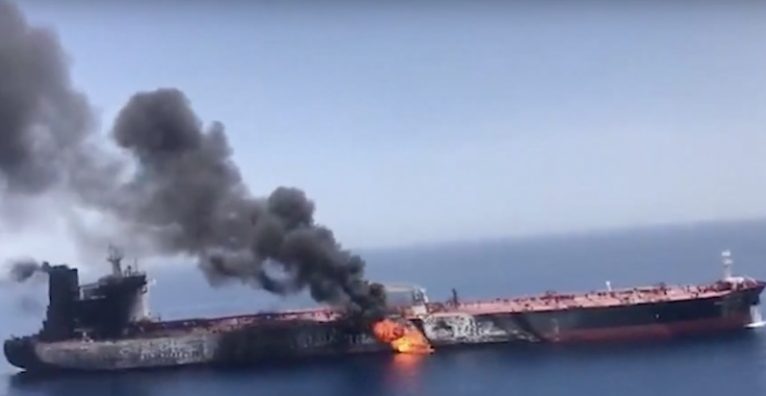Out with a bang?

Tim Smith from Maritime Strategies International (MSI) on the violence in the Gulf adding to global instability and OPEC anxiety and what this all means for the tanker trades.
Tanker markets are used to geopolitical instability – in fact they often thrive on it. Energy supply is both critical and vulnerable, and the flexibility that tanker capacity offers provides a way of securing and smoothing flows of oil when tensions tighten.
The Middle East is the crucible of global geopolitical tension, as a region it is also the largest supplier of oil to the world. It is simultaneously both critical in ensuring the stability of the global economy, and synonymous with turbulence and conflict. This dichotomy has driven volatility in oil prices for decades.
The recent attacks on the tankers seen in the region have been pointed to as ‘bullish’ by some tanker market commentators. Such disruptions have, in the past, supported spot markets, and further escalation may do similar. However, for the shipping industry, and certainly the operators and crew of vessels in the region, such violence should and will not in any way be viewed as a positive.
With the West’s finger of blame firmly fixed on Iran, hostilities have intensified – including rocket attacks on Basra and the subsequent shooting down of a US drone in international airspace over the Straits of Hormuz. Oil prices have inevitably jumped. With all the other risks swirling around the global economy, in particular trade wars, this escalation presents another major macroeconomic risk.
Were crude flows to be seriously disrupted from the Middle East Gulf, the wider connotations – spiking oil prices and associated global economic slowdown – would soon outweigh any short-term benefits.
Notably, high oil prices have not yielded strong tanker markets in recent years. Quite the opposite – spikes in earnings such as 2014/15 and more recently in Q4 18 have coincided with significant declines in oil prices.
What these recent events do highlight is the ever increasing existential pressure being applied on OPEC, both internally and externally.
Externally the group has become locked in a war of attrition with US shale for the last decade. Up until the financial crisis and global recession 10 years ago, OPEC could engage in a fairly mechanistic supply response to oil price changes. Now it must contend with this ever growing source of incremental supply, which since 2016 has been let loose directly into the international market. Moreover this sits in the context of slowing future oil demand growth and the need to preserve market share.
In response OPEC has frequently needed to change its production position, reacting rather than directing. It has also expanded agreement with a wider group of producers including Russia – known as OPEC+.
As this quasi-membership has expanded, internal friction has only grown. Qatar left OPEC last year after regional ostracisation and Iran, now encumbered by US sanctions, is lashing out. Other members such as Venezuela and Libya continue to be embroiled in internal strife.
How long can this organisation persist amid waning influence and internal rupture? As the key determinant of (controlled) output changes, Saudi Arabia has already floated the idea of breaking up the group. Combined with Russia, its crude output comprises nearly one-quarter of total global oil demand. The ‘free-rider’ problem would remain though – curbing production to support oil prices means other producing countries benefit from your actions.
Pressure from the US has also intensified. Anti-OPEC tweets from Donald Trump have snowballed into the drafting of the ‘NOPEC’ bill, which provided a legal framework for US action against OPEC, swiftly countered by Gulf Arab states. So far this has been more of a shot across the bow than an effective strike, but it further illustrates how US attention on OPEC has increased.
Disruption is rife in the oil and energy markets: new sources of supply are rising, environmental alarm is growing louder and transportation technology is changing rapidly. Along with the internal combustion engine, OPEC appears to be an artefact of the 20th Century struggling to see a future in the 21st. Rather than stabilising oil markets, its main concerns are maintaining cohesion and defining a goal it can reasonably achieve.
When the outside world asks: ‘what is OPEC for?’ the answer does not appear obvious. Violence in the Middle East and spiking oil prices are only likely to amplify this question and increase OPEC’s need to justify its existence, both to itself and others.
